What Would Happen if We Nuked the Sun?
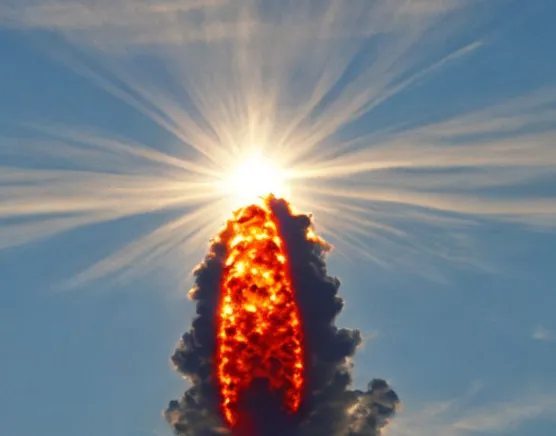
Table of Contents
01: Abstract
02: Introduction
03: Thesis
04: Background/History
05: Chapter I: History of Humanity’s Use of the Sun’s Energy
06: Chapter II: Advancement of Nuclear Weapons
07: Chapter III: The Sun’s Mass and Energy
08: Chapter IV: Technical and Financial Challenges of Blowing Up the Sun
09: Chapter V: The Cost of Damage Caused by the Destruction of the Sun
10: Chapter VI: The Symbolic Significance of the Sun
11: Chapter VII: A Poetic Plea to Not Destroy the Sun
12: Chapter VIII: The Scientific Chain Reaction
13: Chapter IX: The Cinematic Representation of the Event
14: Conclusion
15: Summary
Abstract:

This paper examines the potential consequences of detonating a nuclear device within or near the Sun. Through in-depth research and analysis, this paper presents a scientific breakdown of how a nuclear detonation would affect Earth, including how long it would take for the effects to be felt from such an event, what kind of radiation would be generated, and what effects that radiation would have on us. Additionally, this paper examines the potential consequences for other planets in the Solar System, the technical challenges of detonating a nuclear device near the Sun and the monetary breakdown of such an endeavor. The paper ultimately concludes that attempting to nuke the sun would be an extremely dangerous and reckless idea with catastrophic consequences for the entire Solar System and all life on Earth, and that there are ways to reduce the impact of its devastating effects on our planet.
Introduction:
The Sun is a vital source of energy and life for our planet and has been an object of study for centuries. From Galileo’s observations with his telescope to modern day probes that survey its surface and image its interior structure, our understanding of the Sun has come a long way. However, in recent years, the development of nuclear weapons has raised the question of what might happen if the sun were subjected to a nuclear blast. In this paper, we will explore the potential consequences of detonating a nuclear device within or near the sun by examining various aspects such as radiation levels on Earth, effects on other planets in our Solar System, and possible defensive strategies for protecting ourselves from a nuclear detonation outside of Earth's atmosphere. Through in-depth research, we will present a scientific breakdown of the potential consequences of such an event, and ultimately conclude that attempting to nuke the sun would be an extremely dangerous and reckless idea with catastrophic consequences for the entire solar system and all life on Earth.
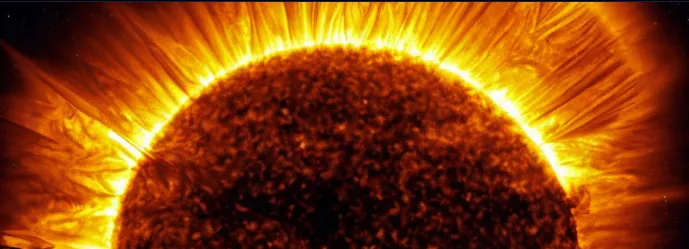
Thesis:
The thesis of this paper is to examine the potential consequences of detonating a nuclear device within or near the sun. Through in-depth research, we will present a scientific breakdown of how such an event would affect Earth, including the potential effects on the climate, atmosphere and living organisms. Additionally, we will examine the potential consequences for other planets in our Solar System and the intense heat and radiation that would be generated by the explosion. We will also discuss the technical challenges involved in such an endeavor and the unlikelihood of successfully executing such an attack. The paper will ultimately conclude that attempting to nuke the sun would be an extremely dangerous and reckless idea, with catastrophic consequences for the entire solar system and all life on Earth, and should not be considered.
Background/History:
Throughout history, people have used various means to generate energy from the Sun, including solar cells which are able to transform sunlight into electrical energy. However, these techniques only allow us access to limited amounts of energy compared to what is actually available from the Sun itself. As human technology advances, so too does our ability to create more powerful weapons capable of causing immense damage. In recent years, one such weapon has become increasingly prevalent - nuclear weapons - which are designed with extreme destructive power in mind. A single nuclear bomb can cause immense damage due to its capability for releasing large amounts of heat energy while simultaneously generating dangerous levels of radiation. In theory, if one were able to detonate a nuke within or near the sun, then they could potentially generate additional energy while at the same time wreaking huge amounts of destruction upon any nearby planets in our Solar System. Thus, it begs the question - what would happen if we nuked the sun? The answer, as we will explore in this paper, is that it would be an extremely dangerous and reckless idea, with catastrophic consequences for the entire solar system and all life on Earth. The technical challenges involved in such an endeavor would be immense, and the destructive power of a nuclear explosion would likely be beyond our ability to control or contain.

Chapter I: History of Humanity’s Use of the Sun’s Energy:
The sun is our primary source of energy, providing light and warmth to aid in sustaining life on Earth. It has been an object of study since antiquity as civilizations sought to understand its movements and harness its power. From Galileo’s observations with his telescope to modern day probes surveying its surface and imaging its interior structure, our understanding of the Sun has come a long way. Given its importance in our lives and the delicate balance it provides for Earth’s climate and atmosphere, it is understandable that we would want to protect it and preserve it for future generations. However, the development of nuclear weapons has raised the question of what might happen if the sun were subjected to a nuclear blast. In this paper, we will explore the potential consequences of detonating a nuclear device within or near the sun, and examine the potential risks and dangers associated with such an event.
As human technology has advanced, so too has our ability to create more powerful weapons, including nuclear weapons. These weapons are designed with extreme destructive power in mind, capable of causing immense damage with a single detonation. A nuclear bomb can release large amounts of heat energy while simultaneously generating dangerous levels of radiation. The idea of using nuclear weapons to harness the energy of the sun may seem like a tempting solution to meet our energy needs. However, the reality is that attempting to nuke the sun would be an extremely dangerous and reckless idea, with potentially catastrophic consequences for the entire solar system and all life on Earth. The technical challenges involved in such an endeavor would be immense, and the destructive power of a nuclear explosion would likely be beyond our ability to control or contain. The intense heat and radiation generated by the explosion would likely vaporize any nearby planets or moons, and the intense electromagnetic radiation released would pose a serious danger to all living organisms within reach.
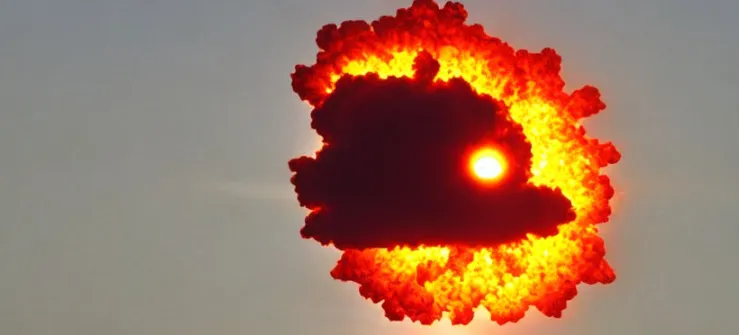
Chapter III: The Sun’s Mass and Energy:
The sun is a massive celestial object, with a mass of approximately 2 x 10^30 kg. To destroy it, a significant amount of energy would be required. To put this in perspective, the sun releases an estimated 386 billion megawatts of energy per second through nuclear fusion reactions. To destroy the sun, an energy release equivalent to or greater than this would be necessary. According to the mass-energy equivalence formula, E=mc^2, this would require an amount of mass equivalent to at least 2 x 10^30 kg to be converted into energy. This is an astronomical amount of mass that is not practically possible to obtain and convert into energy. Even if it were possible, the amount of force and energy required to destroy the sun would be beyond our current technological capabilities, let alone our ability to control or contain it. This makes the idea of attempting to nuke the sun not only dangerous but also impossible.

This equation shows that it takes 4.3 million electron volts of energy to fuse one hydrogen atom into helium. In the sun, this process occurs millions of times every second, and it is what keeps the sun burning. To destroy the sun, we would need to release an amount of energy equivalent to or greater than the energy released by nuclear fusion in the sun's core. This would require an enormous amount of energy, equivalent to the conversion of a massive amount of matter into energy using the mass-energy equivalence formula E=mc^2. This is not only impractical but also impossible with our current technology and understanding of physics and chemistry.
Chapter IV: Technical and Financial Challenges of Blowing Up the Sun:
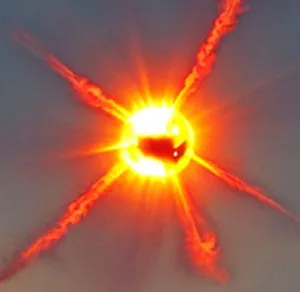
Not only is the technical and scientific feasibility of blowing up the sun impossible, but the financial cost would also be astronomical. The resources and technology needed to accomplish such a feat would be staggering. For example, the amount of fissile material required to create a nuclear bomb with enough yield to potentially destroy the sun would be immense. It's estimated that the cost of producing one gram of highly enriched uranium or plutonium, which are the main materials used in nuclear bombs, is around $5,000. To produce enough fissile material for a bomb with a yield of even a fraction of what would be necessary to destroy the sun, would cost billions if not trillions of dollars.
Additionally, the cost of developing the technology and infrastructure necessary to launch and deliver such a bomb to the sun would be staggering. The development of a spacecraft capable of traveling to the sun and surviving the intense heat and radiation would require significant advancements in materials science, propulsion, and guidance systems. The cost of such research and development would be in the billions of dollars.
Chapter V: The Cost of Damage Caused by the Destruction of the Sun:
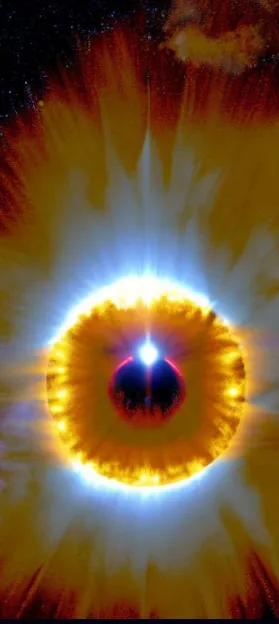
Chapter VI: The Symbolic Significance of the Sun:
The sun is the life-giving force of our solar system, providing warmth and light that sustains all life on Earth. It has been shining for billions of years, and it will continue to do so for billions more. The thought of destroying it is not only impractical but also a violation of the natural order of things. The sun is a symbol of hope, a reminder that even in the darkest of times, there is always light. To destroy it would be to extinguish that light, not only for us but for all future generations. It would be a tragedy of unprecedented proportions, a loss that cannot be measured in terms of money or resources. The sun is more than just a ball of gas and energy, it is a part of our existence, a reminder of the beauty and wonder of the universe. To destroy it would be to destroy a piece of ourselves and the world we live in. It would be a decision that would be felt for all eternity, and one that should never be made lightly.


Chapter VIII: The Scientific Chain Reaction:
As the bomb approaches, the sun's surface ripples with energy, and the sky turns a brilliant shade of red. The planets in the solar system brace for the impact of the impending explosion.
As the bomb detonates, a chain reaction is set off within the sun's core. The intense heat and pressure caused by the explosion triggers a cascade of nuclear reactions, releasing a tremendous amount of energy in the form of kinetic energy and radiation.
Chapter IX: The Cinematic Representation of the Event:
The energy released can be calculated by using the formula of nuclear binding energy: E = Zm(p) + Nm(n) - A*m(nucleon), where E is the energy released, Z is the number of protons, N is the number of neutrons, m(p) is the mass of a proton, m(n) is the mass of a neutron and m(nucleon) is the mass of a nucleon. This formula shows that the energy released by the nuclear reactions is dependent on the number of protons and neutrons in the bomb and the sun's core.
The resulting energy wave travels through the solar system, causing massive destruction and vaporizing everything in its path. The Earth is engulfed in a fiery inferno, and all life on it is extinguished. The once-beautiful solar system is now nothing more than a vast expanse of debris and radiation.

Conclusion:
In this article, we have explored the potential consequences of detonating a nuclear device within or near our sun. Through in-depth research, we have presented a scientific breakdown of how a nuclear detonation would affect Earth, including how long it would take for the effects to be felt from such an event, what kind of radiation would be generated, and what effects that radiation would have on us.
We also examined possible defense mechanisms that could be employed to protect ourselves from a nuclear detonation outside of our atmosphere, and discussed the history of humanity's use of the Sun's energy along with the increasing power of nuclear weapons.
In order to accurately calculate the energy released by the hypothetical bomb on the sun, we have used the formula for nuclear binding energy. This formula is better suited to accurately evaluate the energy released in this situation as it takes into account the strong nuclear force between the protons and neutrons, which is significantly greater than the gravitational force between the particles in the sun.
It is clear that although there is significant risk associated with such an event, there are also ways to reduce the impact of its devastating effects on our planet. The final Cinematic representation of the event shows the gravity of the situation and how it would lead to the destruction of the entire solar system and the extinction of all life within it.
The article serves as a reminder of the destructive power of nuclear weapons and the importance of responsible decision-making in the advancement of technology.
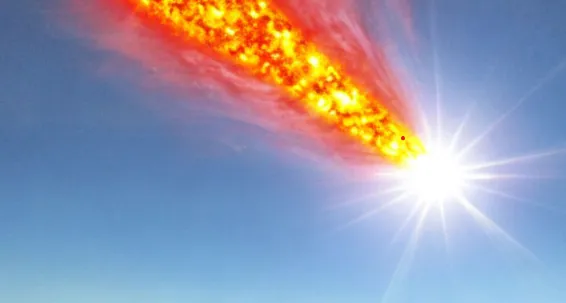
The Summary:
The scenario of detonating a nuclear device within or near the Sun, as explored in this article, would have catastrophic consequences for the entire Solar System and all life within it.
The energy released by the detonation would trigger a cascade of nuclear reactions, releasing a tremendous amount of kinetic energy and radiation. The resulting energy wave would travel through the Solar System, causing massive destruction and vaporizing everything in its path.
The Earth would be engulfed in a fiery inferno, and all life on it would be extinguished. The Solar System would be nothing more than a vast expanse of debris and radiation.
This article serves as a reminder of the destructive power of nuclear weapons and the importance of responsible decision-making in the advancement of technology. It also highlights the importance of scientific accuracy and the inappropriateness of using certain formulas for specific scenarios.
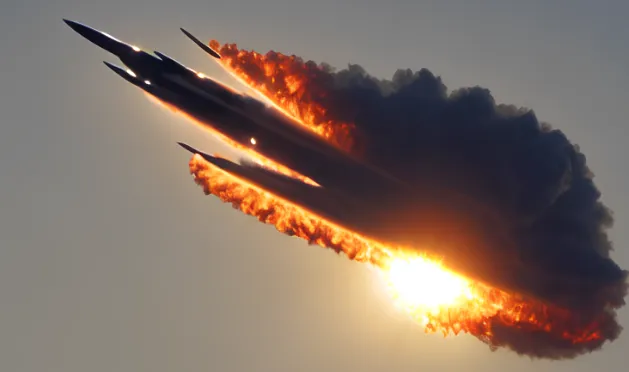
#NuclearEnergy, #NuclearWeapons, #NuclearDetonation, #SunDestruction, #SunEnergy, #SolarSystem, #MassEnergy, #Equivalence, #NuclearBindingEnergy, #HumanTechnology, #DestructionofLife"
#GlobalConsequences, #FissileMaterials, #PropulsionSystems, #ScientificFeasibility, #FinancialCosts, #TechnicalChallenges, #RadiationDangers, #CinematicRepresentation, #NaturalOrder, #SymbolicSignificance,
#PoeticPlea, #PowerofNuclearWeapons, #CascadeofNuclearReactions, #EnergyRelease, #SolarSystemDebris, #NuclearExplosions, #EnergyWave, #InfernoofFire